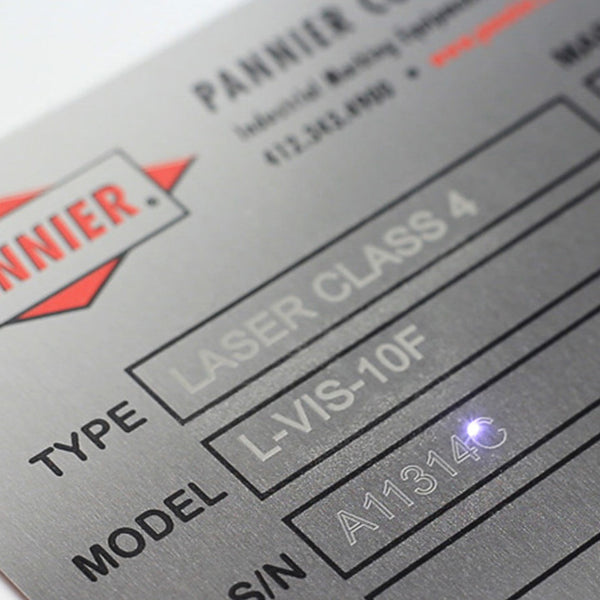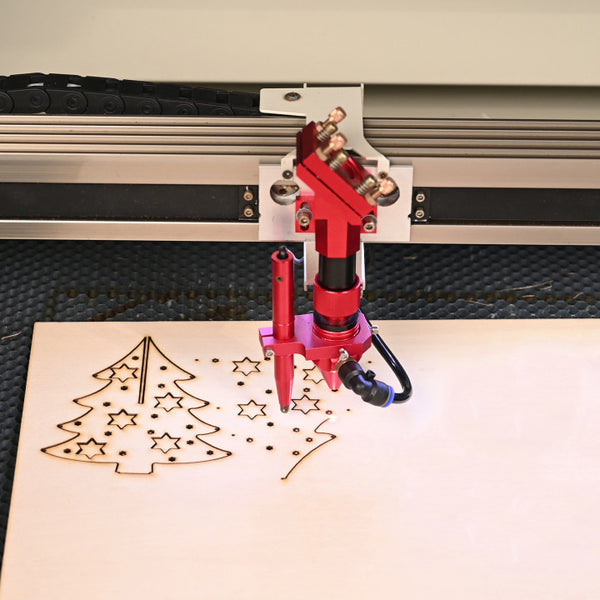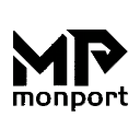Ⅰ.The history of CO2 laser
CO2 laser was invented in Bell Lab in 1964, also known as glass laser tube, which is a laser product with high continuous output power. It is widely used in textile, medical treatment, material processing, industrial manufacturing and other fields, especially in packaging spray code, non-metal material engraving, medical beauty and other industries with unique applications.
CO2 laser technology was basically mature until the 1980s and was widely used in industrial processing in the next 20 years, including metal engraving, various materials carving, as well as welding, melting processing in automotive, shipbuilding and aerospace. Nowadays, any plucky individual or group of ambitious people can buy a CO2 laser machine and start their own artisan engraving business.
Ⅱ. The principle of laser and laser engraving
Laser, in English is the abbreviation of Light Amplification by Stimulated Emission of Radiation, laser is generated by atomic excitation radiation, so it is a single frequency, polarized light source, which has been widely used in many fields of people's social life.
During the engraving process, gas is emitted. For lasers to work, the material must absorb the emitted heat. With metals, a large portion of the light is reflected back. Therefore, a powerful laser is needed to generate the necessary heat for engraving despite reflection. The light that bounces back can harm the machine. Some types of metal, like copper alloys and certain aluminium grades are too reflective for CO2 lasers. This is a limitation that hampers different use-cases.
Laser engraving is nothing more than a tool. Unlike other tools, he uses a laser focusing on the small area, somewhat similar to a magnifying glass placed in the sun that sets things in his focus on fire. Compared to other uses of laser power, the laser engraving machine is not very powerful, due to ease of operation and safety considerations, laser engravers are designed to be manufactured into an integrated fully enclosed equipment.
Ⅲ. How does the CO2 laser machine work?
The laser beam in the glass tube is sealed and filled with C02. A high current is sent through the tube, which creates a reaction with the CO2, increasing the energy of the gas particles so that they produce light. When the light reaches this level of brightness, the byproduct is intense heat, which is strong enough to melt materials with enormously high melting points.
There are three reflecting mirrors throughout the optical structure. The first one is beside the laser tube, the second one is above the Y-Axis gantry, and the last one is above the laser head. Light is reflected through the three mirrors backward and forwards across the length of the tube. The mirrors are to intensify the light so that it can gasify most materials.
The role of the focus lens is to refine the laser’s pathway so it’s focused on an exact spot. This extra focusing process is what makes a CO2 laser machines able to produce such precise and clean finishes on a broad range of materials.
The machine also houses a computer numerical control system that allows it to position the laser head in all directions over the work bed. This works alongside the mirrors and focus lens so the beam can create different shapes without losing accuracy or power. The laser can switch on and off at an incredible speed, allowing the operators to engrave beautiful, intricate designs.
Ⅳ. What can you do with a laser machine?
There are three main functions you can perform using a carbon dioxide laser engraving machine: engraving, engraving and marking.
Marking

In simplest terms, laser marking is a permanent process that uses a beam of concentrated light to create a lasting mark on a surface. Laser marking can be automated and processed at high speeds, while leaving permanent traceability marks on a range of materials, including steel, titanium, aluminum, copper, ceramic, plastic, glass, wood, paper, and cardboard.
Engraving

Laser engraving is a process that vaporizes materials into fumes to engrave permanent, deep marks. The laser beam acts as a chisel, incising marks by removing layers from the surface of the material. The laser hits localized areas with massive levels of energy to generate the high heat required for vaporization.
Cutting

Laser cutting is completely remove and separate the material from the top surface to the bottom surface along a designated path. Laser cuts tend to be extremely clean and precise, although it does depend on the material you’re using. For instance, wooden edges tend to have a darker finish than the original color of the wood. One of the best materials for laser cutting is acrylic, which has a lovely glossy and smooth finish, with no discoloration.
Advantages of Using a CO2 Laser Cutter:
Fast and Efficient
Our Monport 60W and 80 W can reach up to 500mm/s, which brings you high efficiency. We Monport set a variety of processing methods in one: bitmap marking cutting hollowing completed once, humanized design makes it more fast and convenient.
User-friendly
The special control software can be compatible with Auto CAD, Corel DRAW, Inks cape and other software output, can realize the automatic arrangement and modification of text symbol, graphic image, bar code, QR code, serial number automatic increase, supports PLT, PCX, DXF, BMP, JPG and other file formats, and can directly use TTF word library.
No Contact
The beam never actually touches the surface of the material you’re working with. Rather, it causes the material to melt because of the high heat emitted by the laser. This means the materials are less prone to damage — but it also means that the main appendage on the laser machine doesn’t wear down over time.
Safety
It is a safe way of marking, engraving or engraving because it doesn’t use a blade or any other sharp implement. Our Monport laser machines adopt fully closed optical path and multiple protection control design, to ensure the overall stability of equipment.The laser beam is tightly sealed in glass, so as long as you carefully follow the safety instructions, there’s practically no risk of injury.
Precision
The results you can produce with your Monport are extremely precise and accurate. Extreme heat and intensity from the light of the laser beam melt away the material in the design you enter into the computer. The finish is smoother and cleaner than you’d be able to produce by hand.
Ⅴ. What materials can you engrave and cut with Monport?
Some materials must not go anywhere near a CO2 laser cutter machine. Some of these include halogens, phenolic resins, epoxy, beryllium oxide, Teflon, PVB, PVC, carbon and any artificial or real leather containing chromium. Here’s a table of materials that are generally effective and safe for use with a laser engraving machine.


